The Great Horned Owl (Bubo virginianus) is a marvel of evolutionary engineering, capable of something that seems almost magical—silent flight. In the dark woods of North America, these magnificent predators glide through the night without making a sound, their massive wings cutting through the air like ghosts. This remarkable adaptation allows them to swoop down on prey without alerting them to impending danger. While many birds create distinctive whooshing sounds as they fly, the Great Horned Owl moves with such stealth that even sensitive recording equipment struggles to detect their movement. This article explores the fascinating mechanisms behind this acoustic marvel, the owl’s physical adaptations, hunting strategies, and how their silent flight has shaped their role in ecosystems across the Americas.
The Anatomy of Silence: Wing Structure
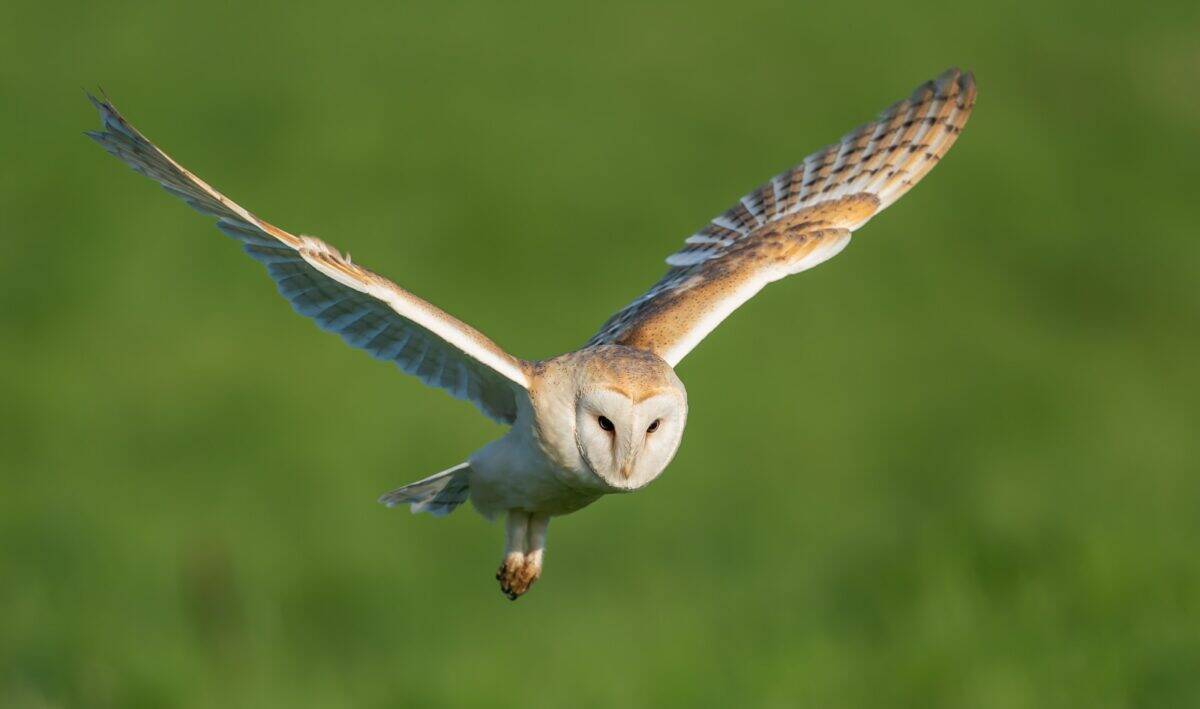
The secret to the Great Horned Owl’s silent flight lies primarily in its unique wing structure. Unlike most birds whose wings have smooth leading edges, the Great Horned Owl possesses a comb-like fringe of stiff feathers along the leading edge of its primary flight feathers. These specialized feathers, called serrations, effectively break up the turbulent air that would normally create sound as it passes over the wing. This adaptation functions similarly to the way noise-canceling technology works, disrupting the formation of vortices that typically generate noise when air flows over a surface.
Additionally, the owl’s primary flight feathers have a velvety surface texture created by microscopic structures that further dampens sound. Under an electron microscope, these feathers reveal a forest of tiny barbs and hooks that create a three-dimensional network that absorbs sound waves rather than reflecting them. This remarkable adaptation effectively muffles the minimal sound created by air passing over the wings, allowing the owl to move through the night undetected.
Feather Design: Nature’s Sound Dampeners

Beyond the primary flight feathers, the Great Horned Owl’s entire wing and body plumage contribute to its silent operation. The owl’s feathers have evolved a unique structure that differs significantly from those of other birds. The vanes of owl feathers are exceptionally soft and flexible, allowing air to pass through them with minimal disturbance. This softness comes from reduced structural rigidity in the barbules (the tiny structures that make up feathers), which creates a more porous surface that absorbs rather than reflects sound.
Furthermore, Great Horned Owls possess a downy fringe at the trailing edge of their wings that acts as a muffler. This fringe smooths the airflow as it leaves the wing, eliminating the small eddies and vortices that would normally create whistling or rushing sounds. The cumulative effect of these specialized feather adaptations is a bird that can move through the air without creating the acoustic disturbances that would alert potential prey to its presence.
The Role of Wing Size and Shape
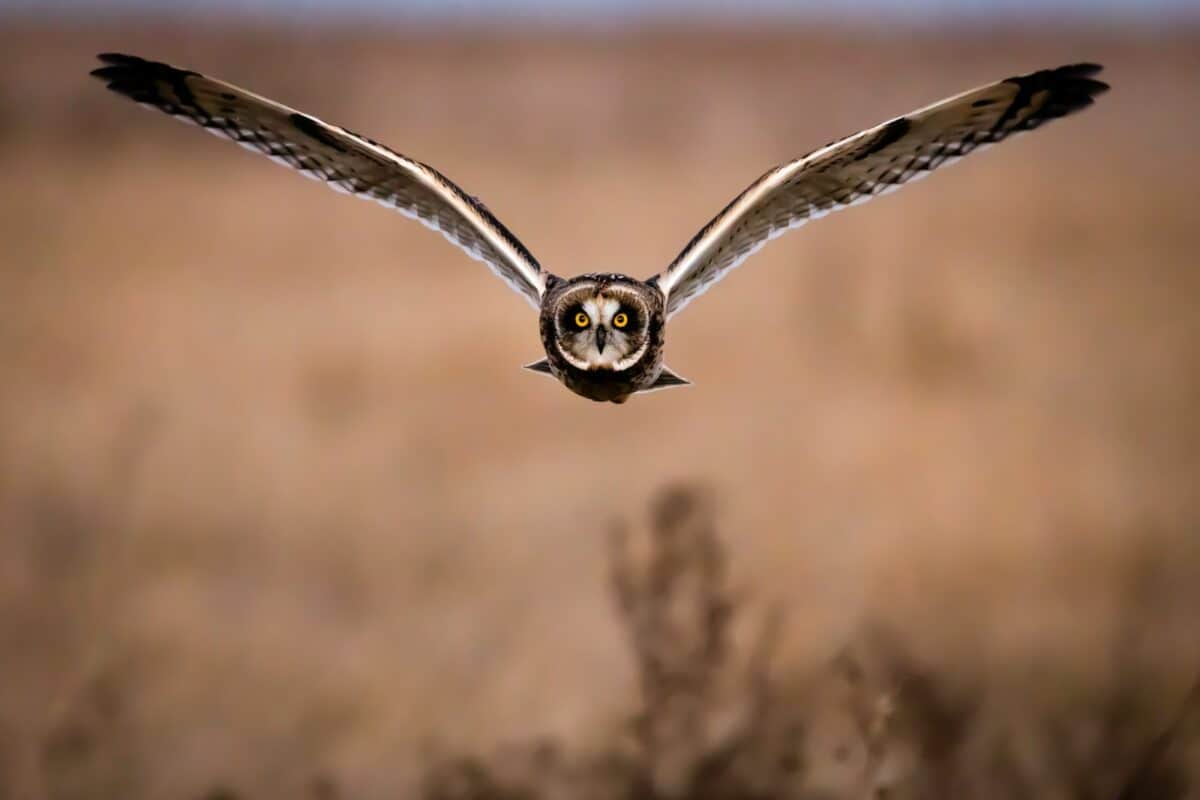
The Great Horned Owl’s wingspan, which typically ranges from 40 to 57 inches (101-145 cm), is disproportionately large relative to its body weight of 2-5.5 pounds (0.9-2.5 kg). This large wing area allows the owl to fly more slowly and with less effort than birds with smaller wings relative to their body mass. The ability to fly slowly is crucial for silent flight, as faster movement generally creates more noise due to increased air resistance.
The wings also have a distinctive broad, rounded shape that contributes to their silent operation. This shape allows for more surface area to distribute the pressure of the air passing over the wing, reducing the intensity of any potential sound-producing turbulence. The feathers at the wing tips are also widely spaced, allowing air to pass through them gradually rather than creating a sharp pressure differential that would produce noise. This combination of large size and specialized shape enables the owl to glide effortlessly and silently through the night air.
Hunting By Stealth: The Evolutionary Advantage
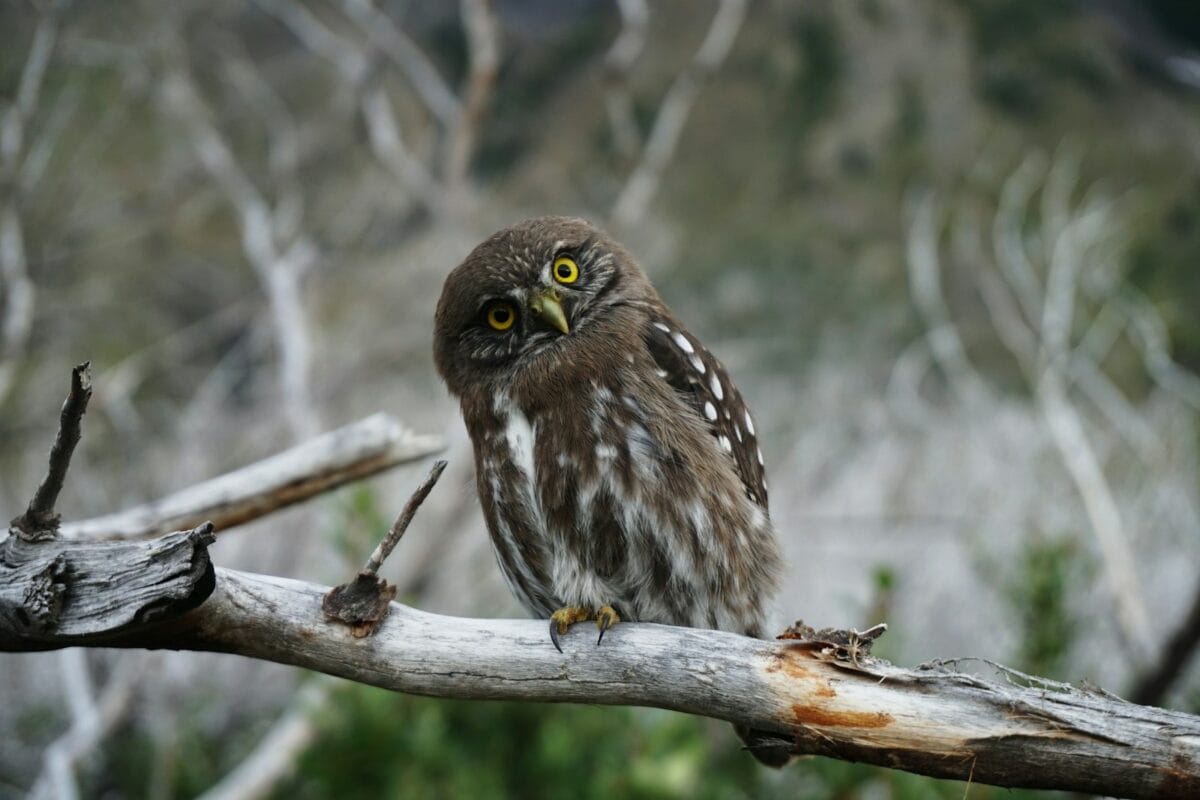
The silent flight capability of the Great Horned Owl represents a powerful evolutionary adaptation that gives these birds a significant advantage when hunting. Most of their prey—including rodents, rabbits, and other small mammals—have acute hearing that would normally alert them to an approaching predator. By eliminating the sound of their approach, Great Horned Owls can strike without warning, significantly increasing their hunting success rate.
Research has shown that many prey species have evolved hearing capabilities specifically tuned to detect the sound frequencies produced by the wingbeats of approaching predators. The Great Horned Owl has effectively countered this adaptation by making itself acoustically invisible. This evolutionary arms race has resulted in the owl’s remarkable stealth technology, allowing it to maintain its position as an apex predator in ecosystems throughout the Americas despite the defensive adaptations of its prey species.
Enhanced Hearing: The Perfect Complement to Silent Flight

The Great Horned Owl’s silent flight works in perfect concert with another remarkable adaptation: its extraordinary hearing capabilities. These owls possess asymmetrical ear openings—with one ear positioned higher on the skull than the other—which creates a slight time difference in when sounds reach each ear. This arrangement allows the owl to triangulate the precise location of sounds with remarkable accuracy, detecting the faintest rustling of a mouse moving under snow or leaves.
The facial disk of feathers that gives owls their distinctive appearance serves an acoustic function, acting as a parabolic sound collector that funnels sound waves toward the ear openings. This combination of silent flight and exceptional hearing creates the perfect predatory system: the owl can detect prey by sound alone, approach without being heard, and strike with deadly precision. Even in complete darkness, the Great Horned Owl can locate and capture prey using only its acoustic abilities—a testament to the sophisticated integration of its sensory and physical adaptations.
Comparing Flight Noise Across Bird Species

The difference in flight noise between owls and other birds is dramatic and measurable. Scientific studies using specialized acoustic equipment have measured the sound produced by various birds in flight, with striking results. While a pigeon or crow produces sound in the range of 20-30 decibels during flight, the Great Horned Owl registers below the threshold of most recording equipment, often producing less than 2 decibels of sound—quieter than human breathing.
This difference is particularly notable when comparing owls to birds of prey like hawks and eagles. Despite having similar ecological roles as predators, diurnal raptors have not evolved the same silent flight capabilities. This is largely because hawks and eagles primarily rely on their superior vision and speed for hunting, often spotting prey from great distances and using the element of surprise through rapid dives rather than silent approach. The Great Horned Owl’s silent flight represents a specialized adaptation to nocturnal hunting where stealth trumps speed.
The Physics Behind Silent Flight

The scientific principles that explain the Great Horned Owl’s silent flight involve complex aerodynamics and acoustics. Conventional aircraft and most birds create noise through three primary mechanisms: turbulent airflow over surfaces (boundary layer noise), vortex shedding at wing tips and trailing edges, and the periodic pressure changes created by flapping wings. The Great Horned Owl has evolved solutions to minimize all three of these noise sources.
The serrated leading edge of the owl’s wing functions similarly to the micro-serrations now being developed for wind turbine blades and aircraft wings. These serrations break up the coherent vortices that would normally be shed at the wing’s leading edge into smaller, less energetic vortices that produce less noise. The owl’s flexible trailing edge feathers similarly disrupt the formation of trailing edge vortices. Additionally, the velvety surface texture of owl feathers increases the thickness of the boundary layer of air moving across the wing, which reduces the velocity gradient near the surface and consequently reduces aerodynamic noise. Engineers studying biomimicry have drawn significant inspiration from these adaptations, applying similar principles to develop quieter aircraft, fans, and wind turbines.
Nocturnal Hunting Strategies
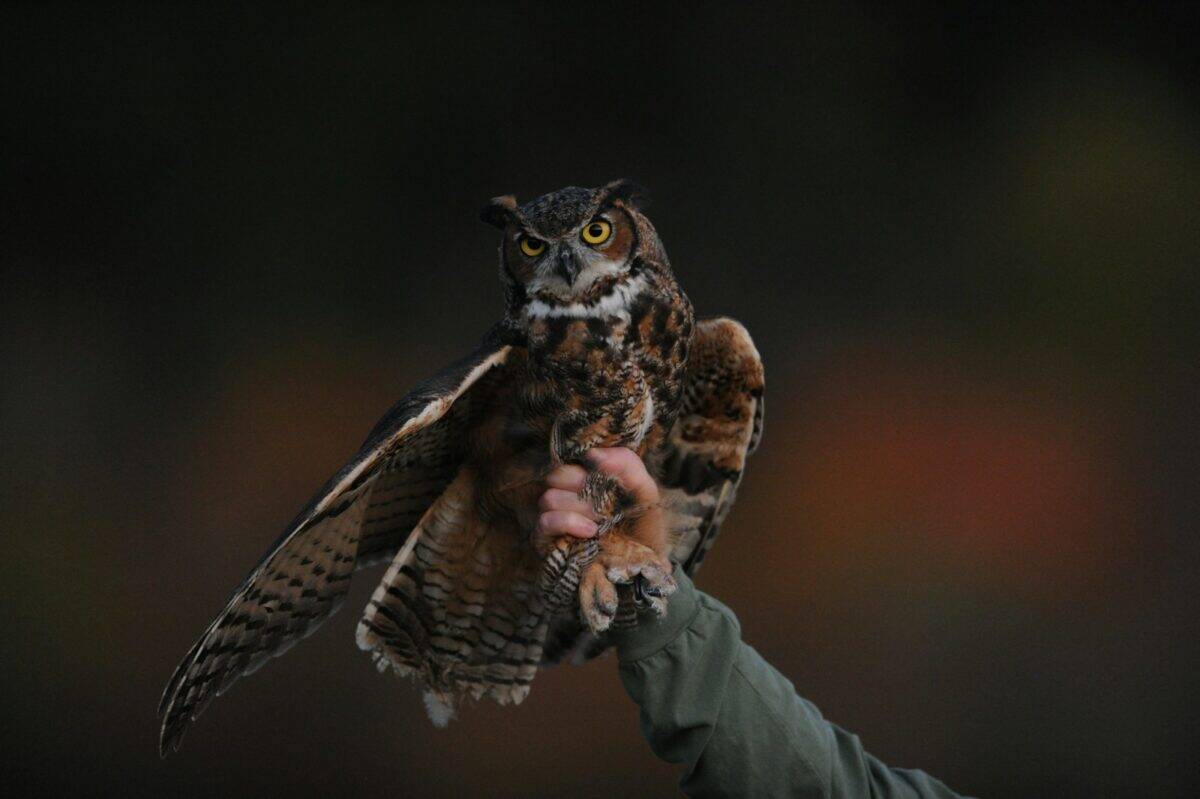
The Great Horned Owl employs a variety of hunting strategies that leverage its silent flight capabilities. Unlike some owl species that hover above potential prey before striking, the Great Horned Owl typically hunts from a perch, using its exceptional vision and hearing to detect prey from a stationary position. Once a target is identified, the owl launches into silent flight, approaching directly or circling to position itself for an optimal attack angle.
The owl’s attack is swift and decisive, with powerful talons designed to deliver a crushing grip. With a foot strength measured at approximately 300 pounds per square inch—comparable to the bite force of a large dog—the Great Horned Owl typically kills its prey instantly upon impact. The silent approach means that prey animals rarely have time to react or seek cover, contributing to the owl’s reputation as one of the most effective hunters in the bird world. This hunting efficiency is particularly important during breeding season when adults must provide enough food for rapidly growing owlets with voracious appetites.
Adaptations Beyond Silent Wings
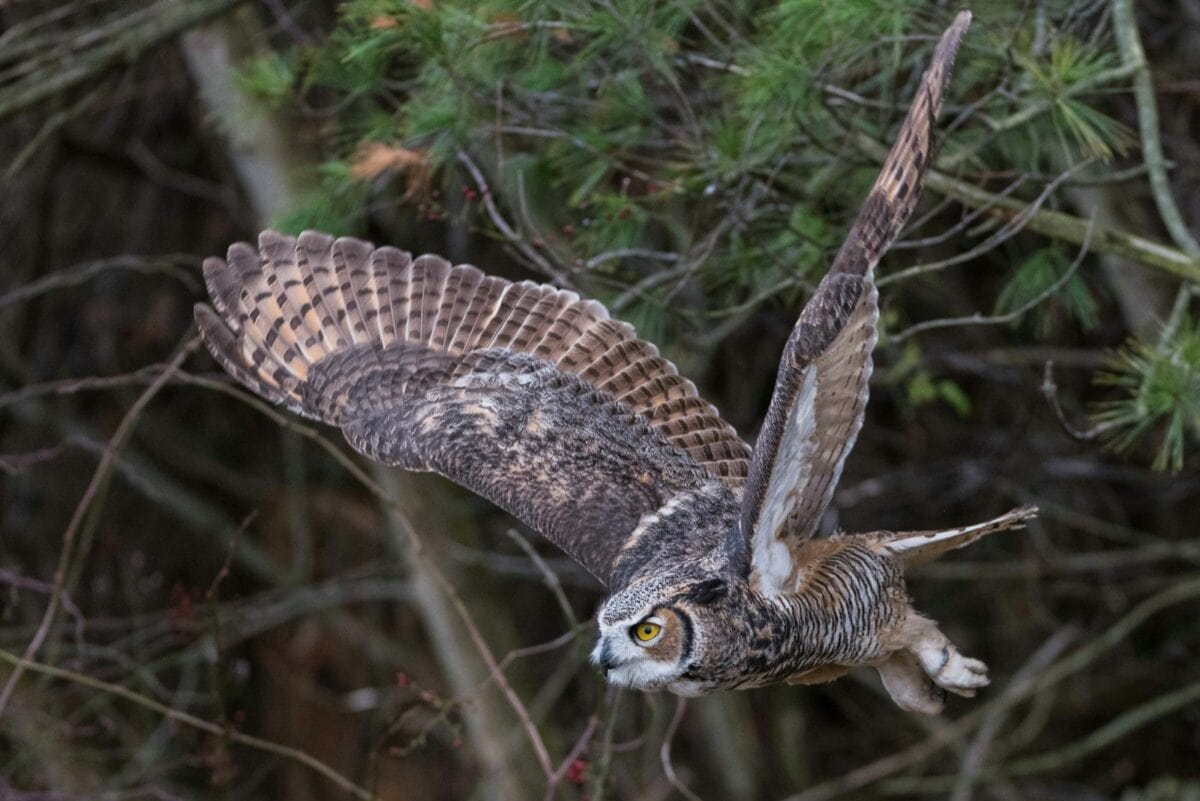
While silent flight is perhaps the Great Horned Owl’s most remarkable adaptation, it works in concert with numerous other specialised features that make this bird a supremely effective nocturnal predator. The owl’s large eyes contain an extraordinary number of rod cells—light-sensitive photoreceptors that function well in low light—giving them night vision estimated to be 100 times more sensitive than human vision. However, these specialised eyes are fixed in their sockets and are unable to move independently like human eyes.
To compensate for this limitation, the Great Horned Owl can rotate its head up to 270 degrees, providing an extensive field of view without moving its body. This head rotation is made possible by specialised adaptations in the neck vertebrae and blood vessels that prevent circulation from being cut off during extreme head movements. The owl also possesses specialised feathers around its beak that function as tactile sensors, similar to a cat’s whiskers, helping it to sense and manipulate prey in darkness. These adaptations, combined with silent flight, create a formidable nocturnal hunter perfectly suited to its ecological niche.
Ecological Impact and Predatory Role

The Great Horned Owl’s silent flight capabilities contribute significantly to its status as an apex predator and its ecological influence across diverse habitats. As generalist predators with an exceptionally broad diet, these owls help regulate populations of numerous species, from rodents and rabbits to skunks, birds, and even other raptors. Their silent hunting efficiency makes them particularly effective at controlling rodent populations, providing valuable ecosystem services in both wild and agricultural settings.
The presence of Great Horned Owls in an ecosystem creates what ecologists call a “landscape of fear,” altering the behavior of prey species that must balance their activities against the risk of predation. Rodents may reduce their foraging in open areas where they would be vulnerable to owl predation, which can in turn affect plant communities and seed dispersal patterns. Through these direct and indirect effects, the silent-flying Great Horned Owl plays a crucial role in maintaining biodiversity and ecosystem functioning across its extensive range from the Arctic to South America.
Cultural Significance and Folklore
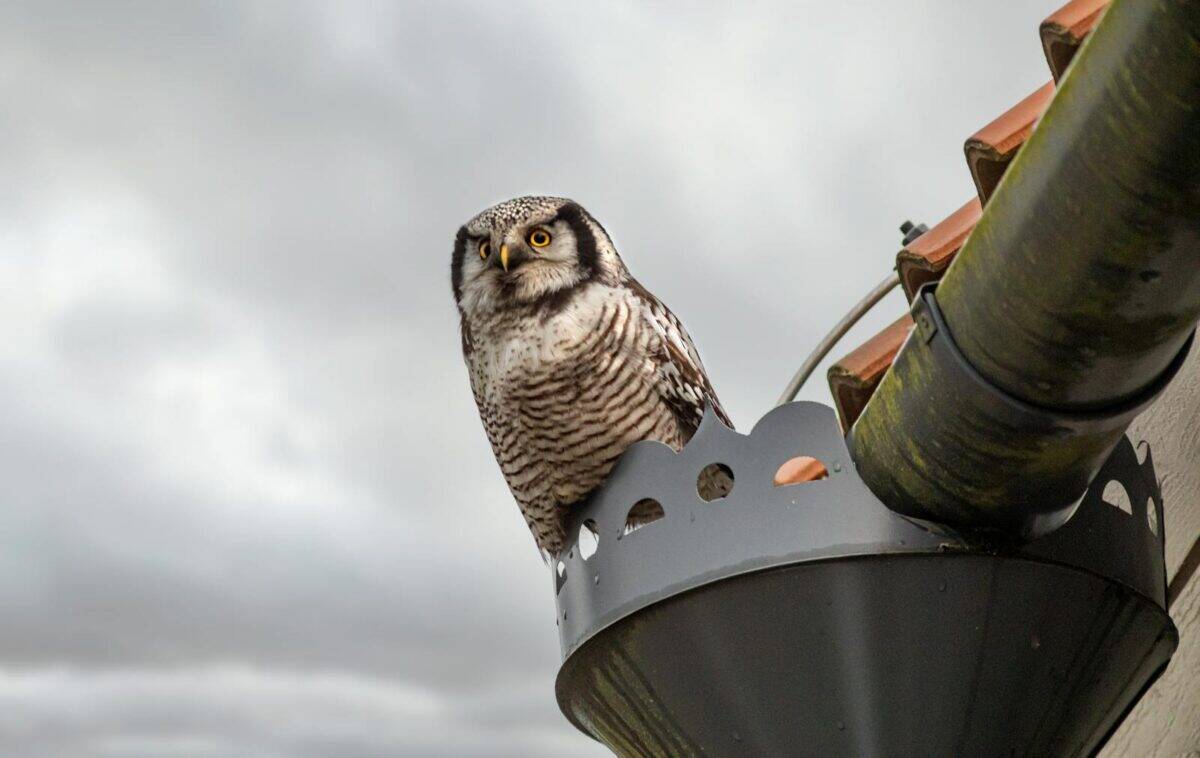
The Great Horned Owl’s silent flight has contributed to its mystique in human cultures throughout history. Many Native American tribes associated these silent nocturnal hunters with death, spirits, or supernatural abilities. For the Dakota people, the Great Horned Owl was Hinhan, the leader of the Bird Nation, respected for its hunting prowess. Other tribes viewed the owl with more trepidation—the silent approach and sudden appearance of these birds led many cultures to associate them with omens or messengers from the spirit world.
In modern Western culture, the silent flight of owls continues to captivate human imagination, featuring prominently in literature, film, and art. From the mail-delivering owls in Harry Potter to the wise owl archetype in children’s stories, these birds maintain a special place in cultural consciousness. The Great Horned Owl’s ability to move without sound continues to symbolize stealth, wisdom, and mystery across diverse cultural contexts, demonstrating how remarkable natural adaptations can transcend biological significance to shape human perception and storytelling.
Conserving the Silent Hunters
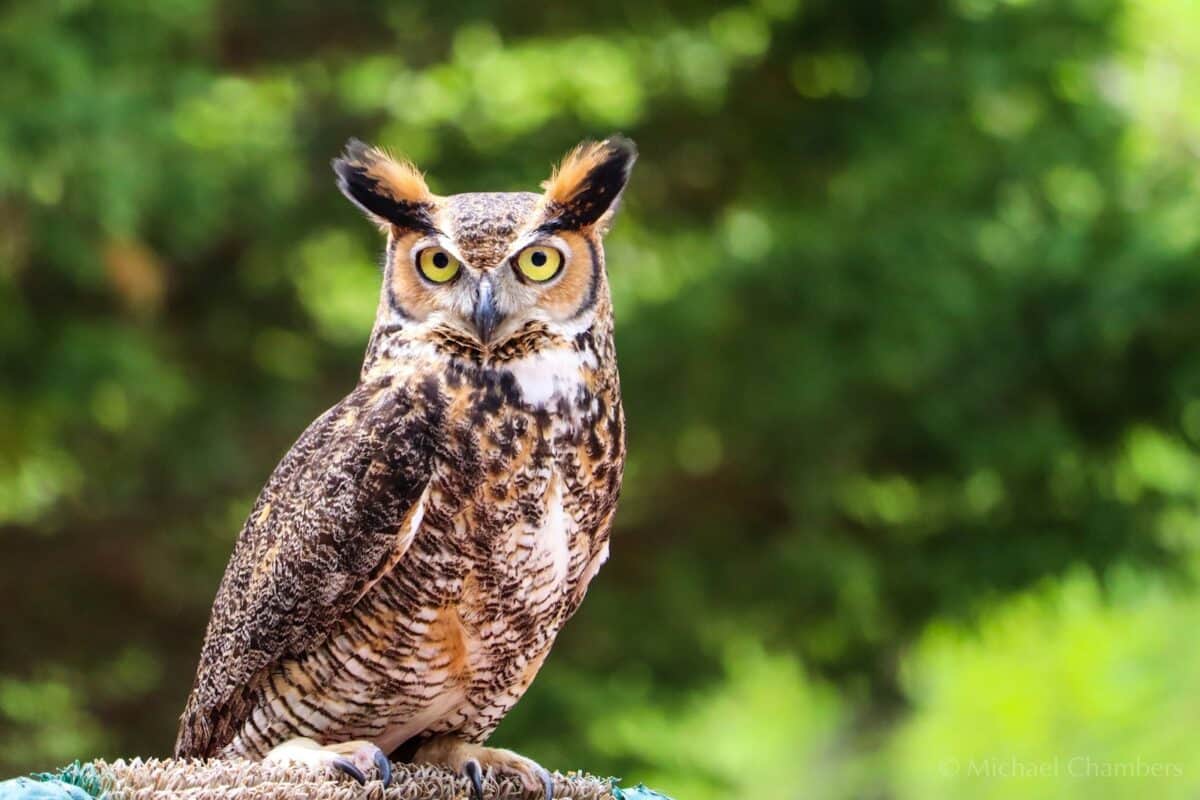
Although Great Horned Owls are currently listed as a species of least concern due to their widespread distribution and adaptability, they face numerous challenges in the modern world. Light pollution disrupts their nocturnal hunting patterns and can affect their breeding cycles. Habitat fragmentation reduces suitable nesting sites, particularly the large trees these owls prefer for raising young. Additionally, rodenticide use poses a significant threat through secondary poisoning when owls consume affected prey animals.
Conservation efforts for Great Horned Owls focus on habitat preservation, responsible pest management practices, and public education about the ecological value of these silent predators. Many wildlife rehabilitation centers work to rescue and rehabilitate injured owls, often including educational programs that allow the public to observe these magnificent birds up close. Protecting the Great Horned Owl not only preserves one of nature’s most remarkable acoustic achievements but also maintains an important component of healthy ecosystem functioning across the Americas.
The Enduring Mystery of Silent Flight
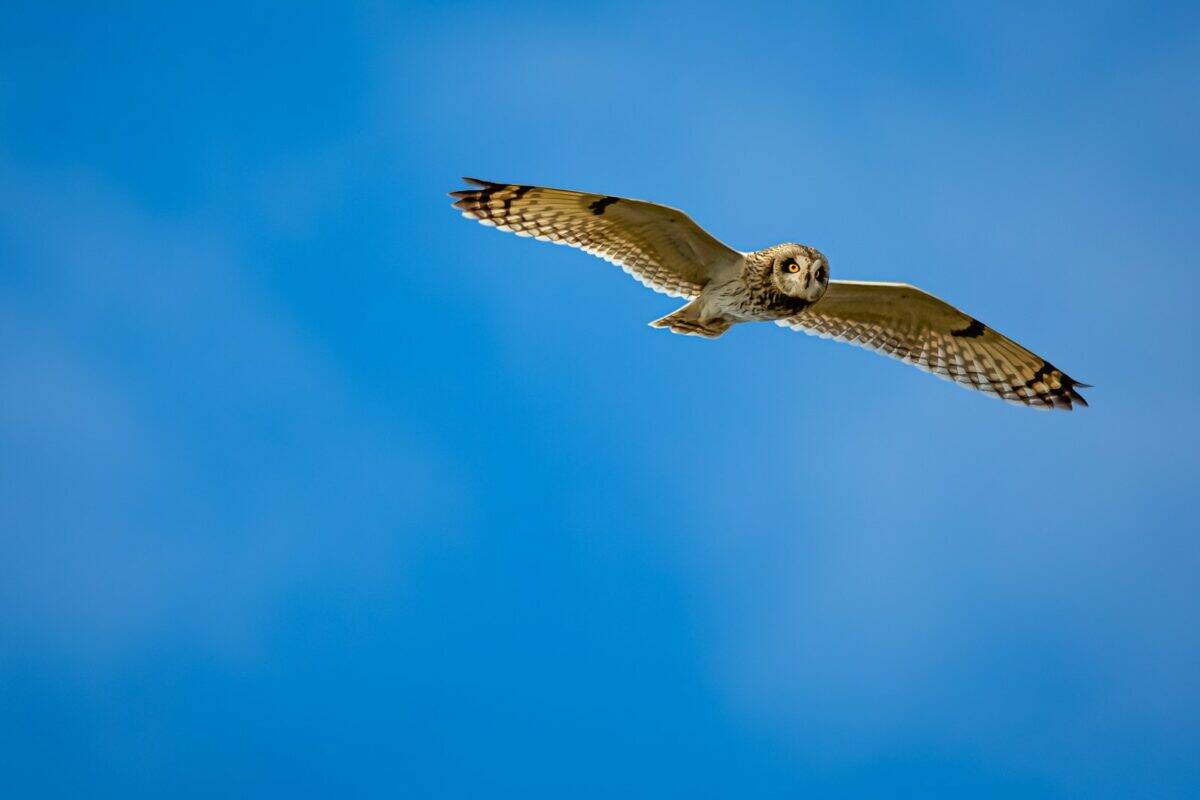
Despite centuries of human observation and decades of scientific research, the silent flight of the Great Horned Owl continues to inspire wonder and investigation. Engineers studying biomimicry have made significant advances in understanding and replicating aspects of the owl’s noise-reduction technologies, yet the complete integration of these features in a single biological system remains unmatched by human technology. The Great Horned Owl represents nature’s solution to a complex physics problem, developed through millions of years of evolutionary refinement.
As we continue to study these remarkable birds, we gain not only greater appreciation for their biological adaptations but also valuable insights that can inform human technological innovation. From quieter wind turbines and fans to stealthier aircraft and drones, the Great Horned Owl’s silent flight mechanisms offer blueprint solutions to noise reduction challenges. In this way, the soundless flight of the Great Horned Owl transcends its biological function, becoming both a marvel of natural engineering and an enduring source of inspiration for human creativity and problem-solving. As we work to protect these magnificent birds and their habitats, we preserve not only an ecological legacy but also a living laboratory of acoustic innovation that continues to reveal new secrets and possibilities.
- The Coldest Town in America—And How People Survive There - August 9, 2025
- How Some Birds “Steal” Parenting Duties From Others - August 9, 2025
- 12 Deep-Sea Creatures You Won’t Believe Exist - August 9, 2025

